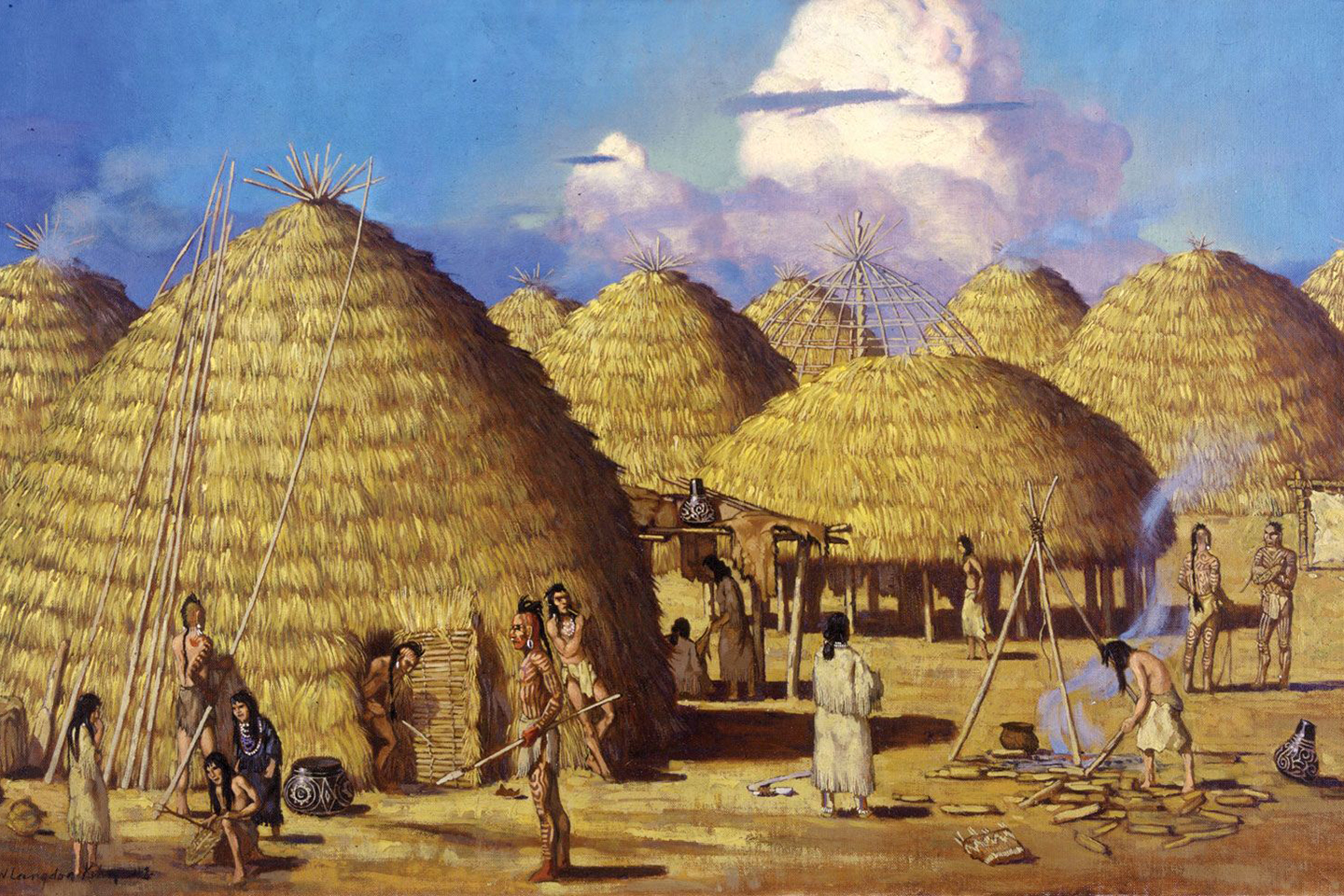Village Creek Flows Through Ages of Indian History
Fort Worth Star-Telegram, April 28, 1984

By Duane Gage
In southern Tarrant County there is a tributary of the Trinity River that has been named Village Creek because of Indian villages found there by Texas military expeditions during the years of the Texas Republic. Village Creek's history goes far beyond the time when white men became interested in this land.
The creek is a small tributary that begins in Johnson County and flows northeasterly for 26 miles, emptying into the Trinity River about three miles northeast of downtown Arlington. The creek traverses two important geographical regions and is adjacent to a third. The creek's flood plain near its mouth lies within the Eastern Cross Timbers, a narrow strip of wooded sandy loam, attractive to Indian groups who camped along the stream for access to wood, water, food sources (small game, berries, etc.), and windbreaks against winter storms. The creek's headwaters are located in the Grand Prairie and flows through gently rolling to level blacklands where large bison herds were found. Just to the east fo the Eastern Cross Timbers is the Black Prairie, another grassy bison range.
Several archaeological sites along Village Creek have provided evidence that the stream was used by hunting people for sporadic periods of time. Members of the Tarrant County Archaeology Society have investigated a paleo-Indian site on Village Creek west of Kennedale; an archaic Indian site about one-fourth mile north of Mansfield, on the east edge of the Village Creek flood plain, on the first terrace; an archaic site in a gravel pit that is now part of the city of Fort Worth land fill (A skeleton was excavated.); an arrow point site (now flooded by Lake Arlington); a generalized site on the north side of Village Creek, where Deer Creek joins it—a site yielding many late archaic artifacts; and archaic sites and Neo-American sites now beneath Lake Arlington and along the lower reaches of Village Creek, including a "burned tree site" west of Village Creek, almost to the Trinity River.
Larry D. Banks, regional archaeologist for the U.S. Army Corps of Engineers, has provided a scholarly study of the prehistoric peoples who frequented the Eastern Cross Timbers:
"In the Eastern Cross Timbers, the locations and types of archaic archaeological sites indicate that environmental conditions were probably not substantially different than they are today. From about 7,500 to 9,000 years ago until roughly the time of Christ or perhaps 500 A.D., people utilizing the Cross Timbers lived nomadic lifestyles based on 'hunting and gathering' patterns of subsistence. Operating out of base camps, small groups or family units appear to have moved along the stream courses relying not on game but to a greater and greater extent upon edible plants...
"The distinction between archaic and Neo-American archaeological sites in this area is based primarily on the presence of actual arrowpoints which local people usually refer to as 'bird points.' The slightly larger and thicker points which are traditionally lumped together as 'arrowheads' were actually dart or spear points and usually indicate differences in time.

